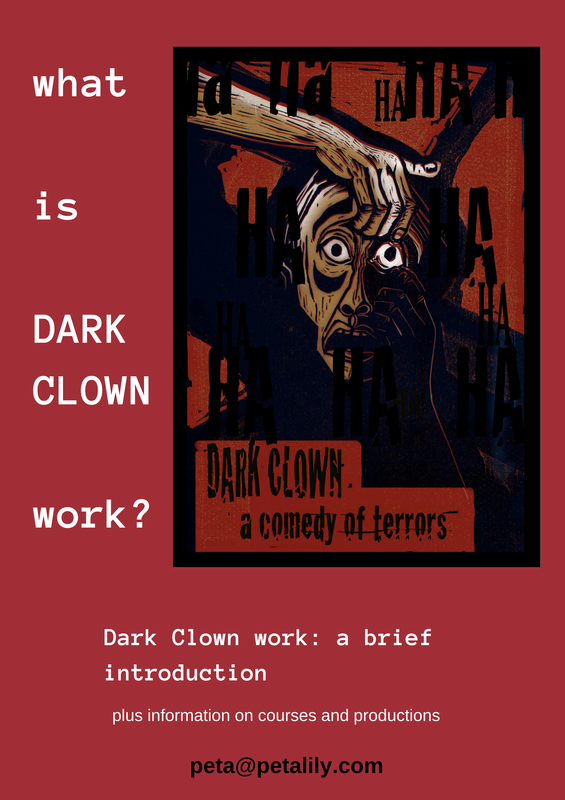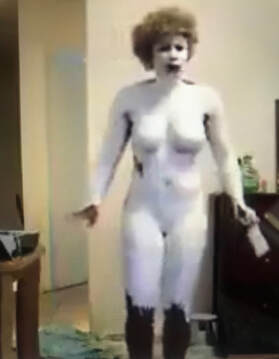 woman paints herself white
woman paints herself white First, an acknowledgement that, as a white educated woman, I aim to interrogate myself for the ways I may be perpetuating and benefiting from racist systems. Also to say that I aim to hold the Dark Clown work in general as ethically as I can, always being ready to learn and address new awarenesses and other perspectives as they come to my attention. The edginess of the work keeps me vigilant and I aim to hold the notions of exploitation and profiteering in mind as I write.
Part 1: A desperate response
Back in 2016, one woman responded to the reports of a disproportionate number of Police shootings of black citizens, and to the racist White Lives Matter moment which arose in response to the #BlackLivesMatter movement. According to the TYT coverage (see below) of the video, her name is Tashala Dangel Geyer.
This amazing woman posted a piece of performance art or activism online (to my knowledge, she herself did not define it in any way*). If you google 'woman paints herself white', you'll find clips of people watching the footage and wondering 'is she crazy?' (while at the same time saying she is 'serious' and also judging her as if she were proposing this as a serious 'answer'). One vlogger felt it was unhelpful to the issues at stake.
The video and images from it are often taken down because of the small amount of nudity involved (the paint largely obscures any anatomical detail although occasionally, she turns around and we see her body without the coverage of paint).
'If you wanna survive'
I admire what Dangel Geyer has done.
She begins with: 'This the best shit I ever could have thought of. This is saving my life!
... You know what, the Lord woke me up - and sent me this sign (slapping the brush to paint her inner thighs, profile view) so I went on ahead to Home Depot and got this paint.
(Standing facing us) 'Cos white lives matter. Guess what? White lives matter. White Lives. (painting her right leg again). Just white. White. White. White white white white. (Exhales)
That’s the argu – never – if you wanna survive ... I’mma keep sayin’ (right palm up) go white!
Jus' go white ... Baby, I don’t want nothing brown on me.'
She continues with her message to 'Black families' and keeps interrupting herself by spotting bits of her body that she has missed. It's a classic clown predicament of solution-problem-solution-problem. She is working with repetition, interruption and rhythm. She engages her audience, too, asking the viewer to 'Hep me out' ... so that she misses no patches that would give her away. ... 'Bring in the white! Hoo, gonna be a’right' (painting left armpit) ... (waves left hand in front of her face, to indicate) 'Ronald MacDonald, man! You won’t get shot.'
Troubled Laughter
I first watched the footage with compulsion. Her focus and commitment are palpable. I am also surprised into uneasy laughter by this woman's lively rhythms and wit, combined with the horror of the situation i.e. I am afraid for my life because of the way I look / because of the way I am - it's not a comfortable laugh.
In this video document, a woman demonstrates vulnerability by appearing naked live online.**
At the same time she makes a very direct address to the audience. This piece has many elements of Dark Clown work: Troubled Laughter, Palpable Cost, direct appeal to the audience - we witness her and those of us with caucasian privilege experience Implication. Also, Dangel Geyer has the courage to allow us to witness (and experience) Marginalised Emotion - plus she possesses good comedy craft.
Distance
Dark Clown, similar to Comedy, equals 'Tragedy plus time'. Dark Clown work (as I work with it in teaching and in dramaturgy) needs sufficient distance from the actual real life predicament / subject. Often by being abstractified into a non-specific Absurd realm (see the posts on The Maids and this review of Hamlet or Die) and / or by a distance of time.
Dangel Geyer's piece / statement / performance is very close to the bone. It is temporally immediate, dealing with ongoing race issues and pointing at the entrenched impasse between those trying to raise awareness of inequality and of conscious (and unconscious) bias and those who somehow manage to interpret #BlackLivesMatter as a threat to their own rights and validity. Racist behaviour and inequality have, in the UK have been exacerbated by Government policies of austerity and by the xenophobic media campaign in advance of Br*xit.
... a 'sidebar' musing on spatial distance and intimacy
Dangel Geyer's piece / statement / performance exists online - the internet being a medium which can often create positive connection but which is also well known for knee-jerk, divisive reaction. It is a courageous choice of platform. There is no time here to contrast and compare the internet with the more dream-like, contemplative space of a theatre where life can be seen simultaneously intimately, but also at a remove, except perhaps to ponder whether we can say that, as theatre offers a physiological experience of shared space in the auditorium, it may possibly contribute more to cohesion as opposed to division between watchers.
Controversy
TYT coverage of the phenomenon is in this clip together with a discussion (from a mainly white) panel. One panellist manages to make sexualised comments about the footage, even while conceding / recognising that the woman's intent was not sexual. But that is a side note to the thrust of this blog post.
When some vloggers who review / watch this video call her crazy, they fail to consider that the author of the footage, Tashala Dangel Geyer may be, like Hamlet, only mad 'north-north-west'.*** She knows what she is doing, she is doing what she is doing for a purpose, for effect. Hamlet uses a smokescreen of craziness to a purpose (we are never quite sure whether it's to buy time, to be discounted, thereby making spying on Claudius more easy allow himself more licensee to say the unsayable?). We can say that Dangel Geyer in fact is braver than Hamlet as she is saying the unsayable and taking the absurdity of a situation to a logical conclusion.
I find her piece / statement / performance bitingly apposite, witty, disturbing and also moving.
The medium (housepaint, not social media) and the message
A couple of the male viewers express concern about the paint on her skin. Rightly so - it's housepaint. Yes, uncomfortable, unhealthy and must have been difficult to remove. She is being bold and reckless for a purpose. Using some nice pan-stick make-up would have sent a completely different message. Makeup coverage would have risked being too light and cosmetic an effect. It may have been a contributing factor that paint was more affordable than makeup.
Paint is also a protection for wood, whereas make-up is more aesthetic, designed to create an illusion, an enhancement or possibly an enticement.
House paint is a rough and ready solution, and an accessible one. This woman is communicating immediacy and pragmatism as well as communicate desperation. She addresses her audience with urgency. Go, go now to Home Depot - a different message to: google your nearest Kryolan outlet.
Dangel Geyer is not to my knowledge a theatre maker, she is a human being responding to a desperate predicament. What we see in this remarkable creative document is a human being in extremis, demonstrating the absurdity of her situation by pretending she has discovered and is sharing an absurd 'solution'.
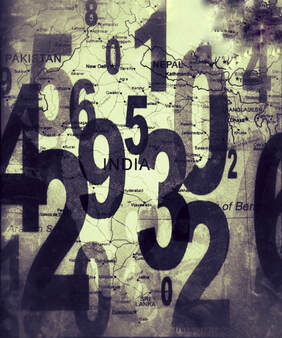
The Dark Clown work provides a way to address tragic and troubling issues. The subtitle of the Dark Clown documentary is 'taking Laughter to the Limits.' Yes even the Troubled Laughter has limits - for example, it does not include Evil Laughter. More than once I have been asked if it were possible to portray the issue of violence towards women using Dark Clown. I find that a very strong challenge indeed.
On one of my Take It Further courses, a talented Asian performer came with a will to look at the Indian equivalent of the Korean Comfort Women. She was researching women doing sex work during the days of the Raj who were kept in dreadful conditions. Wikipedia tells us: 'Although the governments of many Indian princely dates had regulated prostitution prior to the 1860s, such regulation in British India was first ushered in by the Cantonment Act of 1864. The Cantonment Acts regulated and structured prostitution in the British military bases. ... The structuring features of the Cantonment Acts provided for about twelve to fifteen Indian women for each regiment of British soldiers.' (I can't find the specific number of men in a British regiment in the days of the Raj but I found this more recent source: 'A regiment normally contains of around 650 soldiers depending on its role.')
The performer had researched and found that women were kept in the dark in cockroach-ridden 'accommodation', and forced to service a large number of men each day - this figure of sex acts per woman per day was not given I'm the above Wiki entry; however, 650 divided by the upper number of 15 women is 43.3333 recurring).
I once read of a woman trafficked forcibly into prostitution who had, one Christmas day, been forced to service 80 men. Sorry for the downer. It depressed me too, when I read it. I was reading the article on my phone on the tube, and the number would not make itself real to me. I decided to count men I saw, innocent commuters, on my journey home, just to appreciate that number: 80.
An existential exercise
Now that I come to write about this, I think that what made this instance work for me, this Dark Clown treatment of this particular subject was not only some historical distance, but also the fact that this improvisation was achieved in service of this course participant trying to come to terms with events that were part of the oppression of her race, her forefathers/foremothers' nation and her biological sex.
The absurd - and finding a workable metaphor
After telling me/us (the assembled course participants) about the cockroaches and the dark and about the large number of men in a single day, I said, 'Ok. Can you think of some boring action or movement that you can repeat. And after each repetition, you will count: 'one', then 'two', then 'three', and keep going.
I was impressed at her commitment and her level of physical fitness that she chose burpees! And off she went. This performer is a very funny woman with experience in stand-up and improv. She did those burpees: down out, squat, up 'one.' Down out, squat, up 'two'. We could see and sense the cost almost immediately. Down out, squat, up 'three.' She had also come dressed in a saree ... unhappily. In the pre-course interview, she told me that she had enrolled on a course with Philippe Gaulier and that he had suggested that she come back dressed as 'Mrs Ghandi'. She reported that she was cross with herself for not having challenged the brief, and also for the way she responded to the brief because she felt her ability to play was hampered because she found the costume was so physically restrictive. 'I cannot flee the scene!', she quipped in an earlier part of her Take It Further session, while wearing the saree.
Down out, squat, up 'four.' Due to the exertion, she started, quite naturally, to make noises ... pants and grunts. This performer had done my Clown & Dark Clown workshop, so knew how to release and work with the sounds - they were compelling and rhythmic and varied. She kept on; with burpee five, six seven, eight. The sounds started to include a noise like a cow moaning (appalling and hilarious simultaneously). Incrementally, she introduced sounds from other barnyard animals: lambs, goats, chickens and pigs, all with the ongoing burpees keeping the base-line, inexorable rhythm going - Down out, squat, up 'fifteen.' Down out, squat, up 'sixteen.' ...
Comedy Craft plus the cathartic value of Witnessing
Perfect Dark Clowning. We were laughing at the ridiculousness of the counting, and our physiology was affected by the vigour of the movement. The animal noises were absurd and ridiculous, however her desperation and commitment had an earnest quality - in her willingness to engage with the task, we could also imagine the women's choicelessness or obligation to fulfil their daily quota of men.
The underlying rhythm of the burpees affected our physiology (our 'laughing gear'), the moment to moment surprises (contrast) of the chaotic sounding but wonderfully varied and contrapuntal animal noises added laughter nudges, and a sense of the Ridiculous (while at another level making a comment on the poor sex-workers' de-humanisation). So laughter was created, but Troubled Laughter - because the improvisation clearly conveyed the horror of what was being demonstrated / presented for us to witness.
* I celebrate the uncategorisable.
** Her nakedness is not sexual in intent - although some viewers respond to it through a sexualised lens.
*** of course there are some who think Hamlet has actually been driven crazy - and it would be totally understandable if that were the case for Dangel Geyer - there is ample cause for mental pressure.
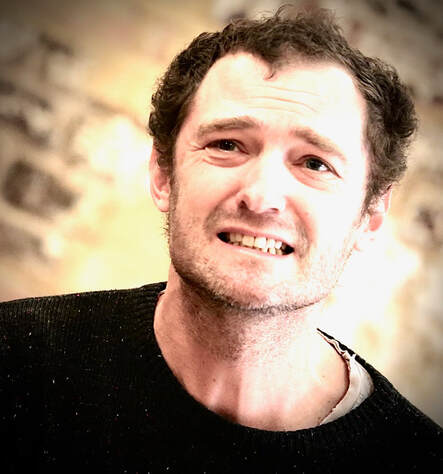
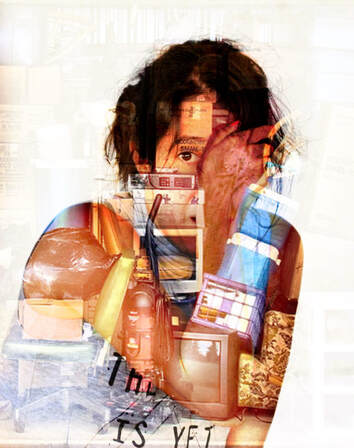
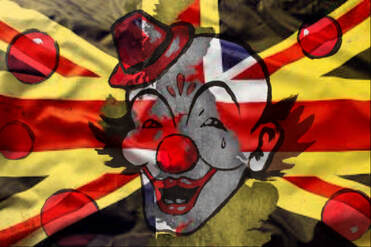
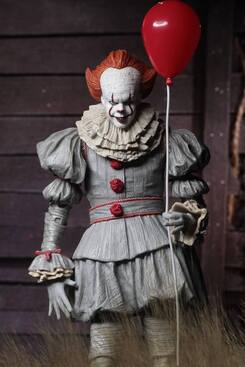

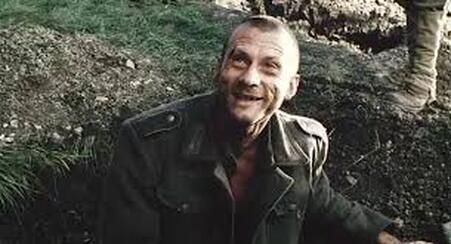
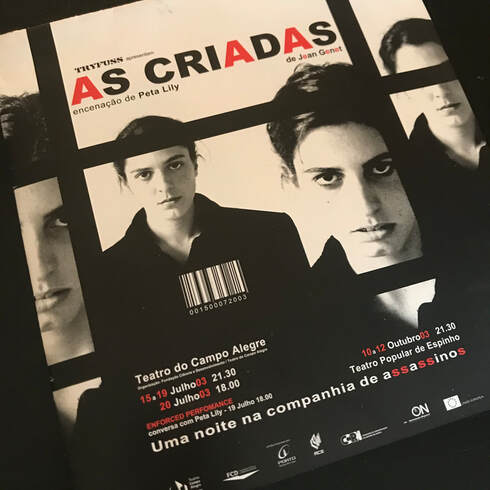
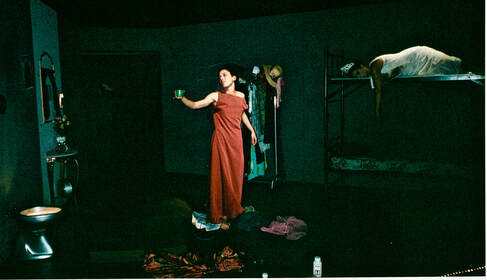
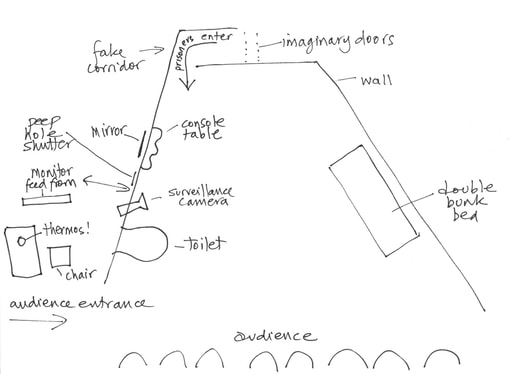
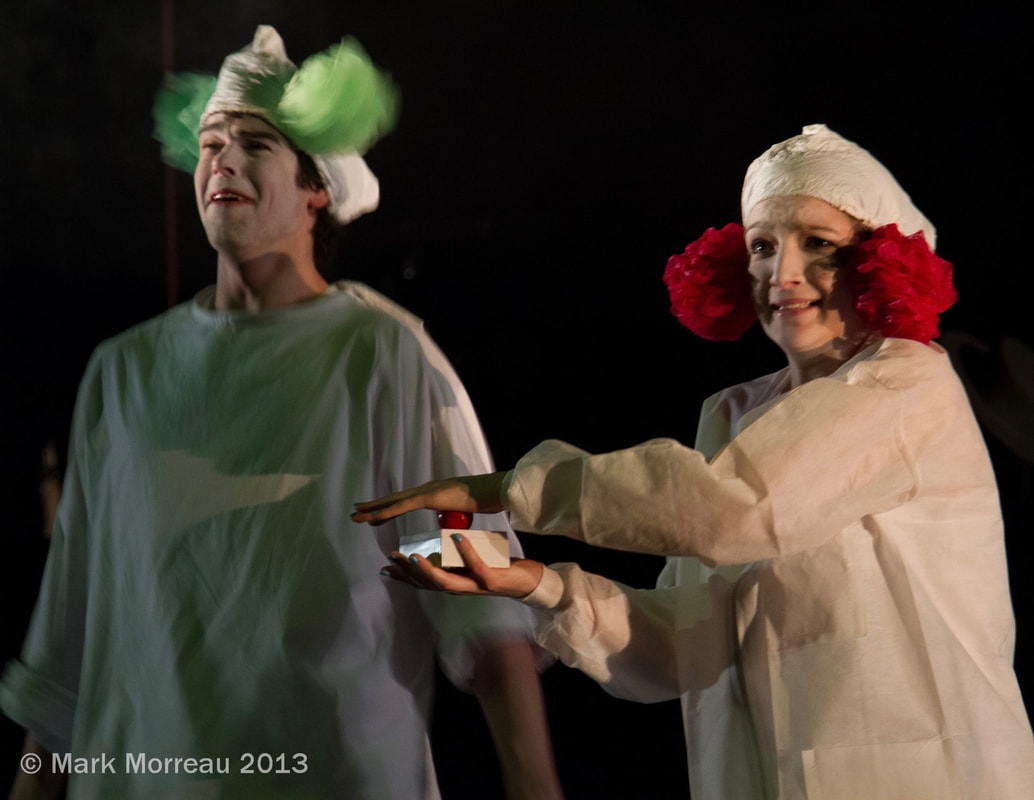
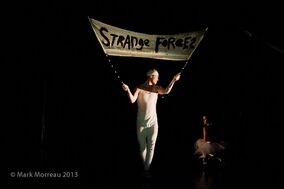
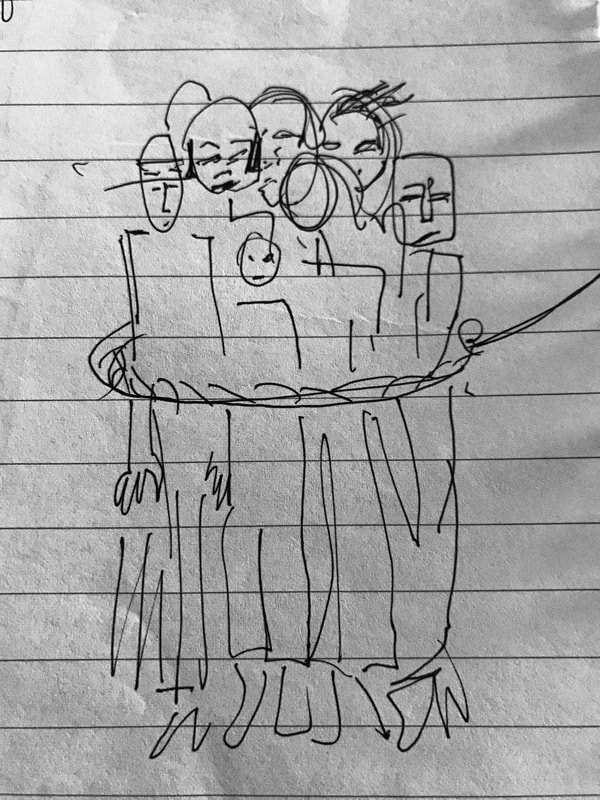
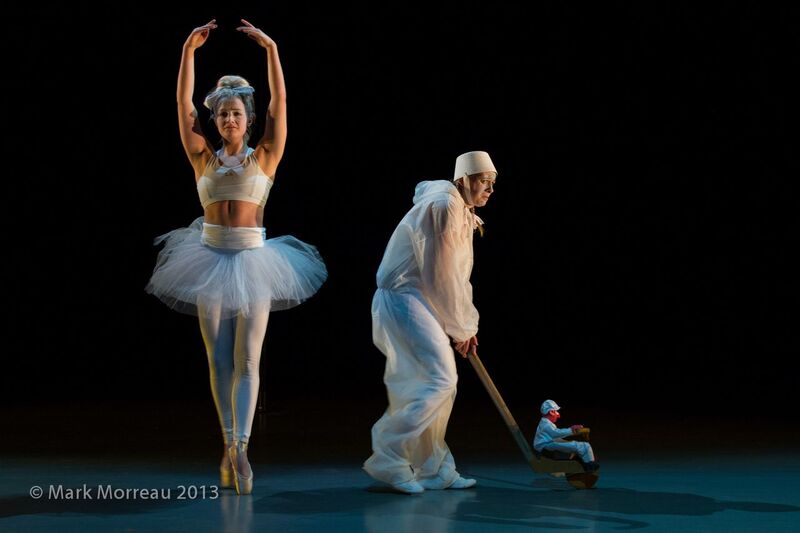
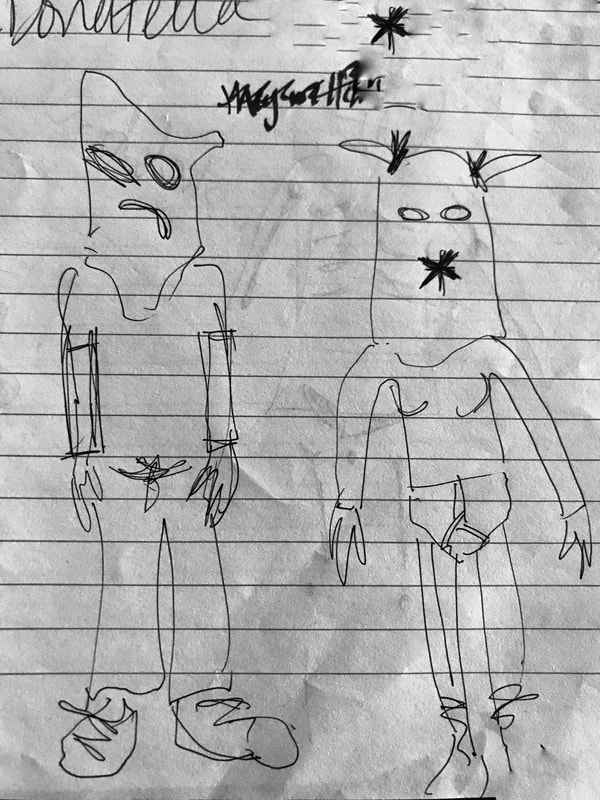
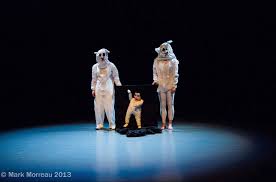
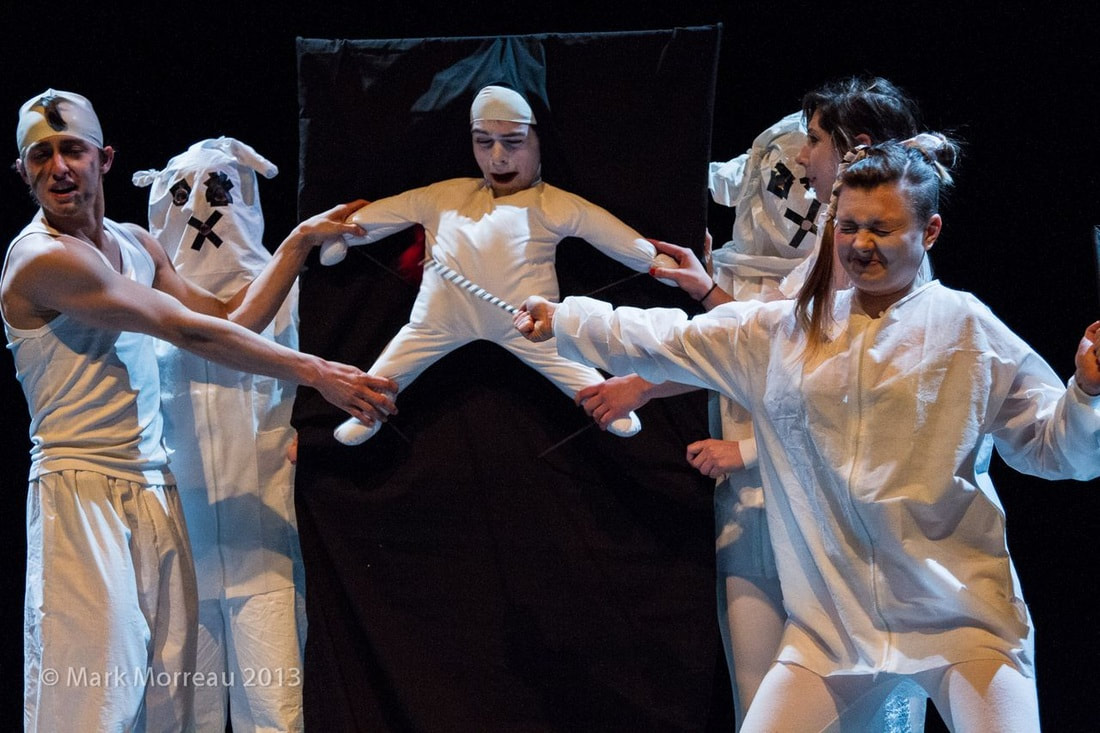



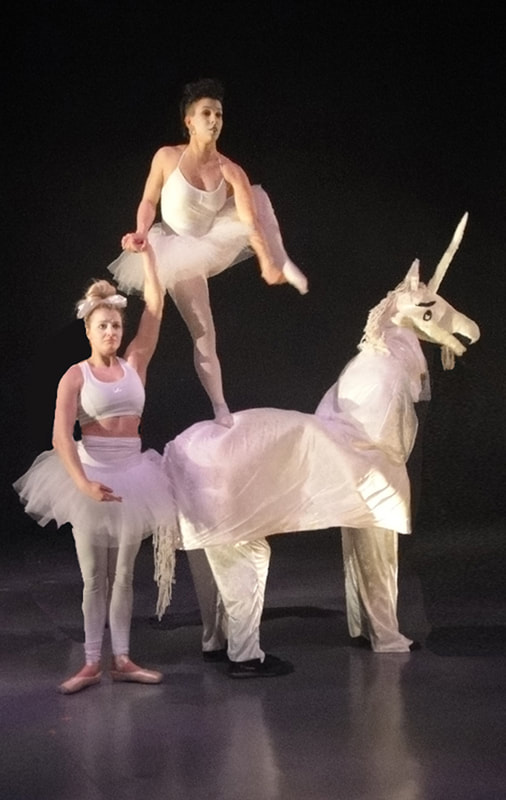
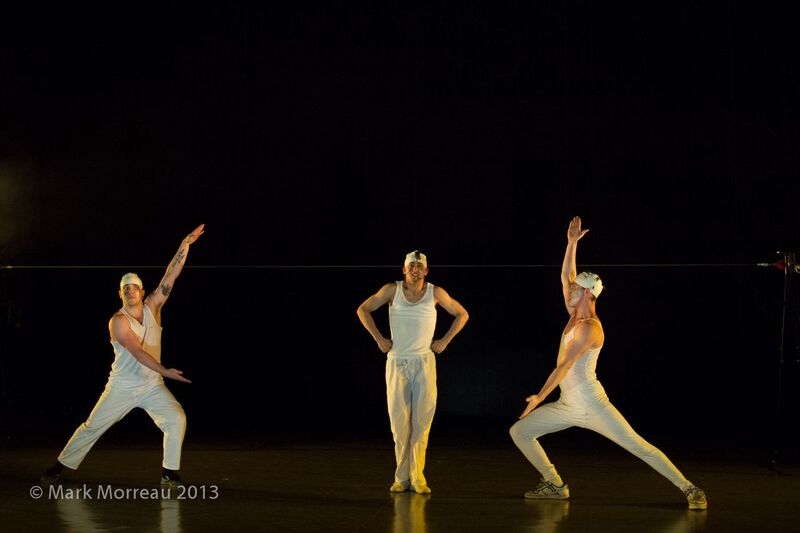
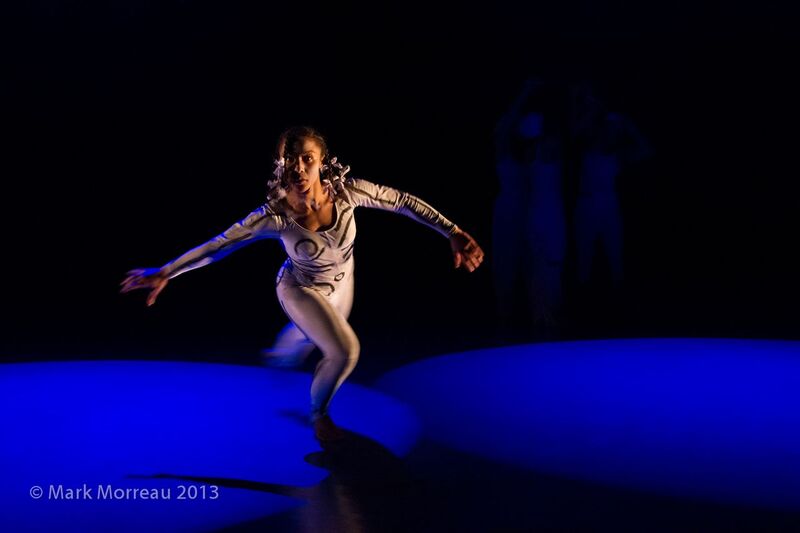
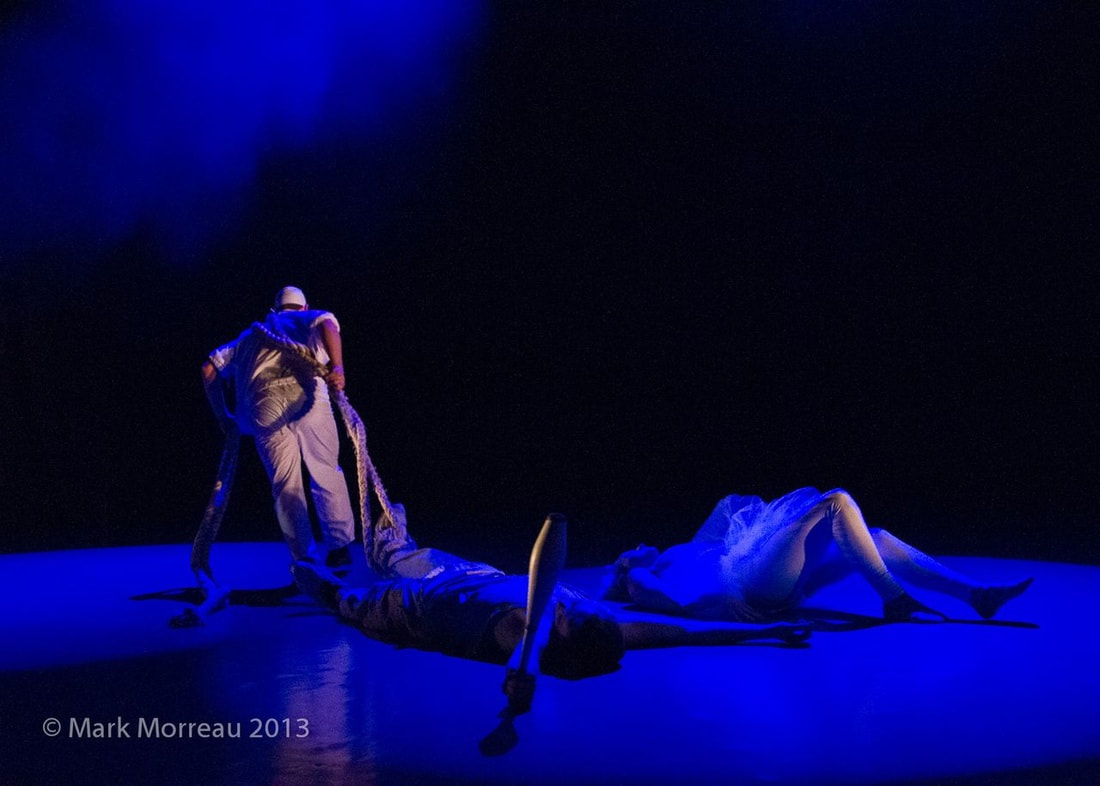
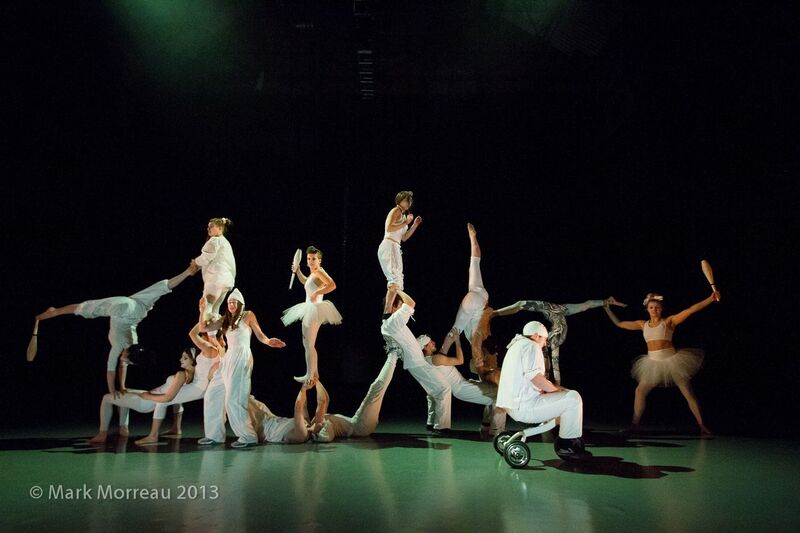
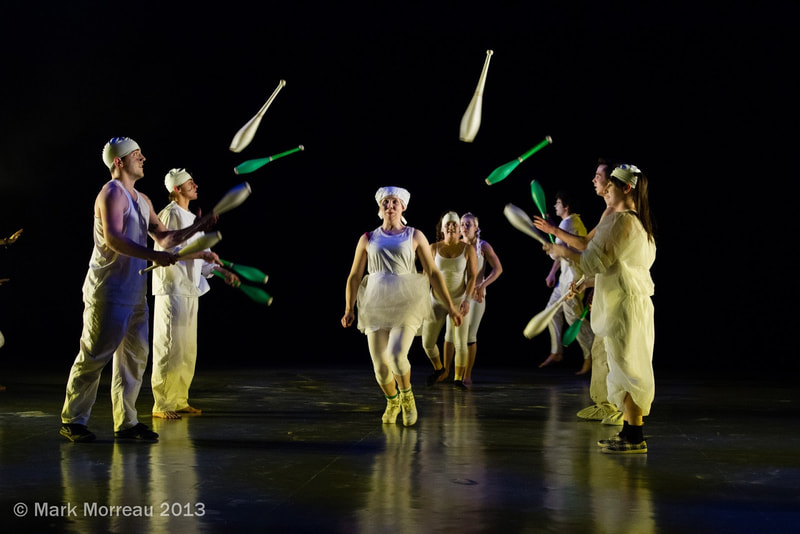
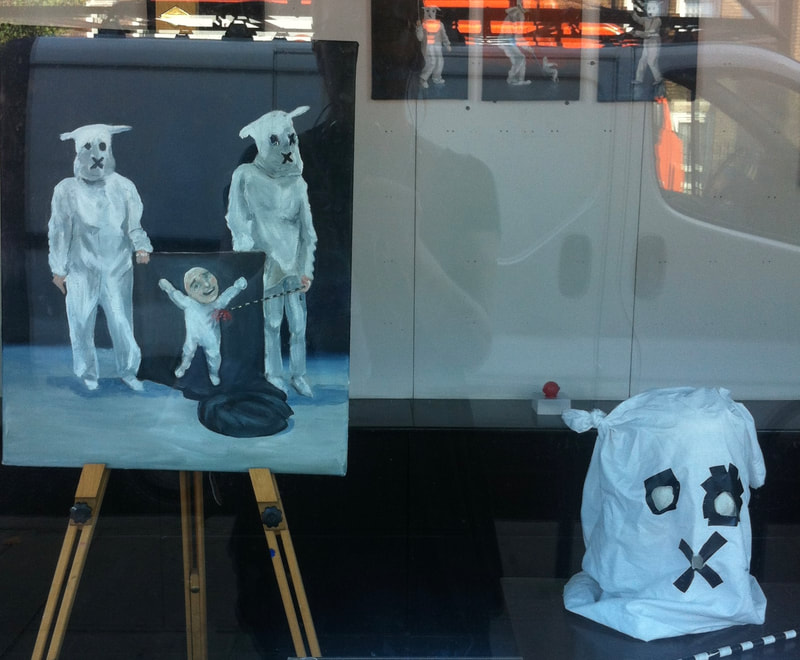
 RSS Feed
RSS Feed
